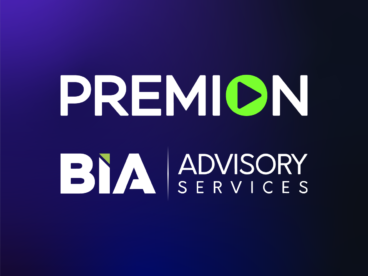Navigating the Growing Ad-Supported CTV Buying Opportunities

Author: Justin Gutschmidt, Head of National Sales, Premion.
Consumers are embracing ad-supported streaming TV in a major way. These free and lower priced ad-supported tiers are not only an attractive value proposition for consumers but offer brands a way to engage OTT audiences with highly popular content. As advertisers follow their audiences, the ability to target consumers with greater precision and scale will see streaming TV capture an even bigger share of media budgets.
CTV continues to outpace other formats and shows no signs of slowing down, according to IAB’s “Video Ad Spend 2020 and Outlook for 2021” report, which finds that nearly three-quarters (73%) of CTV buyers plan to shift budget from broadcast and cable to CTV in 2021; advertisers, on average, spent $20 million on CTV in 2020; and more than one-third (35%) of buyers expect to increase CTV video ad spending in 2021. Furthermore, eMarketer projects that the U.S. CTV upfront spending will double to $4.5 billion this year and reach $6 billion in 2022, with overall U.S. CTV advertising hitting $13.4 billion in 2021 and $17.4 billion in 2022.
The proliferation in ad-supported streaming brings more media buying options and more complexity for marketers to navigate. Today, CTV advertisers can buy directly from publishers, work with aggregators or buy programmatically — and it’s important to understand the differences among the options, especially when it comes to inventory quality, targeting, brand safety, and measurement approaches.
Here are three considerations for effective and simplified CTV media buying success:
The value of premium aggregators: To achieve the necessary scale and reach, marketers may resort to making disparate buys with many publishers and walled gardens. Beyond the issue of cross platform frequency management and reach limitations beyond their subscribers, delivery pacing becomes a continuous challenge. Rebalancing under delivered impressions between publishers is time consuming and often unachievable mid-flight with multimarket local campaigns.
As such, an effective and optimal approach for advertisers is to work with a trusted aggregator that has curated many direct connections to premium inventory to achieve the advantages of reach and scale. Agencies and marketers need to achieve audience scale for targeting, ensure proper frequency capping, and consolidate reporting under one dashboard.
The prerequisites for brand safety and ad fraud protection: Another top consideration for choosing a trusted aggregator with established premium content relationships is ensuring that campaigns run in brand-safe and fraud-free environments. Brand safety risks are greater when media buyers purchase CTV and OTT inventory on open exchanges. In fact, a Pixalate report found that 24 percent of programmatic OTT/CTV is invalid traffic in Q4 2020. Thus, understanding the inventory supply source is crucial and advertisers should look for the TAG Certified Against Fraud Seal of approval to ensure that they’re choosing trusted providers that are committed to vigilance in ad fraud protection.
The CTV advantage regarding consumer privacy changes: With the move to a cookieless environment and in the wake of recent consumer privacy changes, marketers are eyeing CTV as a great alternative to mobile advertising. Unaffected by cookie constraints, CTV offers an affordable way to target with precision and drive measurable performance outcomes. For instance, automotive advertisers can now leverage automotive insights, such as specific auto-intender segments and vehicle sales data, to gain a complete understanding of audience behaviors and connect OTT viewership to direct business results like verified car sales. Choosing a premium streaming TV aggregator that has invested in data-driven targeting and attribution capabilities provides marketers with the confidence to reach their audiences in a targeted and measurable way – thereby minimizing media waste and maximizing the efficacy of their ad spending.
For deeper insights on effective planning, buying, and measurement of streaming TV advertising, download our complimentary report – “A Marketers Guide: The New Rules Ahead for Streaming TV Advertising”
Read us on MediaPost here.

